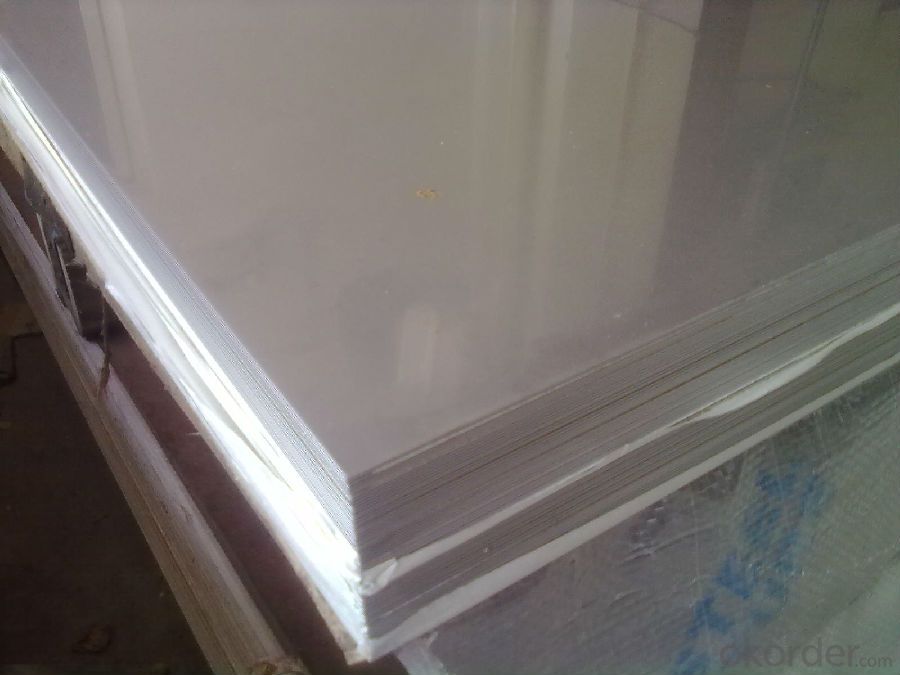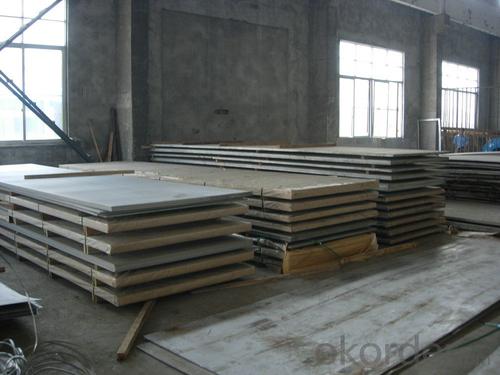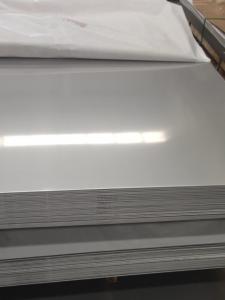Stainless Steel sheet and plate with amazing price
- Loading Port:
- Shanghai
- Payment Terms:
- TT OR LC
- Min Order Qty:
- 10000 m.t.
- Supply Capability:
- 5000000 m.t./month
OKorder Service Pledge
OKorder Financial Service
You Might Also Like
Specifications of stainless steel
304 stainless Steel Plate
stainless steel plate,steel sheet,steel plate
Standard: ASTM,GB,DIN,JIS,ISO,EN,etc.
TISCO stainless Steel Plate 304/NO.1 finished
stainless steel plate,steel sheet,steel plate
Standard: ASTM,GB,DIN,JIS,ISO,EN,etc.
Delivery short and low cost advantage.
Description of stainless steel:
stainless steel plate,hot rolled stainless steel plate,cold rolled stainless steel plate,stainless steel sheet,steel sheet,sheet






Material of stainless steel:
304,304L,309S,310S,316,316L,316Ti,317L,317L,321,347H,409,409L,410S,420,430,201,202,etc.
Thickness of stainless steel:
From 0.3mm to 100mm
Width of stainless steel:
1000mm,1219mm,1250mm,1500mm,1800mm,2200mm,2500mm or as your requirement
Length of stainless steel:
2000mm,2438mm,2500mm,6000mm,6096mm or as your requirement
Application of stainless steel:
Stainless steel plate applies to construction field, ships building industry, petroleum & chemical industries, war and electricity industries, food processing and medical industry, boiler heat exchanger, machinery and hardware fields. Our company has cooperative relation between the domestic agents. Stainless steel plate can be made accordingto the customers requirements. Fasten delivery. Quality assured.Welcome to order more.
Contacts
If you have any question,please feel free to contact us.
- Q: Can stainless steel sheets be used for fermentation tanks?
- Yes, stainless steel sheets can be used for fermentation tanks. Stainless steel is a popular choice for fermentation tanks due to its resistance to corrosion, durability, and ease of cleaning. It provides a hygienic environment for fermentation processes and helps maintain the desired temperature and conditions for fermentation.
- Q: Can stainless steel sheets be used for elevator mirrors?
- Yes, stainless steel sheets can be used for elevator mirrors. Stainless steel is a durable and versatile material that offers a sleek and polished appearance, making it a popular choice for elevator interiors. Stainless steel sheets can be polished to a high mirror-like finish, allowing them to serve as reflective surfaces for mirrors in elevators. Additionally, stainless steel is resistant to corrosion, making it suitable for the humid and often harsh environments found in elevators.
- Q: Can stainless steel sheets be used for outdoor furniture or fixtures?
- Outdoor furniture or fixtures can indeed utilize stainless steel sheets. Stainless steel, being a material highly resistant to corrosion and exceptionally durable, makes it perfect for outdoor applications. Its resistance to rust enables it to endure different weather conditions, such as rain, snow, and high humidity. Furthermore, stainless steel possesses a sleek and contemporary look, which contributes to its popularity as a preferred option for outdoor furniture and fixtures. Its strength, longevity, and ability to withstand environmental factors explain why it is frequently employed in constructing outdoor tables, chairs, benches, grills, and other fixtures.
- Q: Can stainless steel sheets be used for railway infrastructure?
- Yes, stainless steel sheets can be used for railway infrastructure. Stainless steel is a versatile and durable material that offers various advantages for railway applications. Its corrosion resistance properties make it suitable for outdoor and high humidity environments, which are common in railway infrastructure. Stainless steel sheets can withstand harsh weather conditions, including extreme temperatures, rain, and UV radiation, without corroding or deteriorating. This makes them ideal for railway tracks, bridges, tunnels, and other structures that are exposed to the elements. Additionally, stainless steel sheets have excellent strength-to-weight ratio, allowing for the construction of lightweight yet sturdy railway infrastructure. This reduces the load on the overall structure and facilitates easier transportation and installation. Stainless steel is also resistant to fire and can withstand high impact, making it a reliable choice for railway applications where safety is a priority. Furthermore, stainless steel sheets are easy to clean and maintain, which is beneficial for railway infrastructure that requires regular upkeep. They can be easily polished to restore their aesthetic appeal and maintain a clean appearance. Stainless steel is also recyclable, making it an environmentally friendly choice for sustainable railway construction. In summary, stainless steel sheets can indeed be used for railway infrastructure due to their corrosion resistance, strength, durability, fire resistance, ease of maintenance, and sustainability.
- Q: Can stainless steel sheets be used in architectural applications?
- Yes, stainless steel sheets can be used in architectural applications. Stainless steel is a versatile material that offers durability, corrosion resistance, and aesthetic appeal, making it suitable for various architectural purposes such as cladding, roofing, decorative elements, and structural components. Its sleek, modern look and ability to withstand harsh environmental conditions make stainless steel sheets a popular choice in the construction industry.
- Q: Can stainless steel sheets be used for roofing or cladding?
- Certainly! Roofing or cladding can definitely utilize stainless steel sheets. Stainless steel, being a durable and resistant material, is perfectly suitable for exterior purposes. It provides exceptional strength and can endure severe weather, thus making it an ideal option for roofing or cladding. On top of that, stainless steel presents a sleek and contemporary look that can enhance a building's aesthetic charm. Moreover, its long-lasting nature and minimal maintenance needs make it a cost-effective choice in the long term. All in all, stainless steel sheets are a dependable and adaptable option for roofing or cladding ventures.
- Q: How are stainless steel sheets finished?
- Stainless steel sheets can be finished in various ways to achieve different appearances and textures. The most common finishing techniques for stainless steel sheets include: 1. Mill Finish: This is the standard finish when stainless steel sheets are initially produced. It has a dull, non-reflective surface with visible grain lines caused by the manufacturing process. 2. Brushed Finish: Also known as satin finish, this technique involves brushing the stainless steel surface with an abrasive material to create a consistent, fine grain appearance. It provides a smooth and matte finish, which is often preferred for aesthetic purposes. 3. Mirror Finish: As the name suggests, this finish creates a highly reflective and mirror-like surface on stainless steel sheets. It is achieved by polishing the surface with progressively finer grits of abrasive materials until a smooth and reflective finish is obtained. 4. Embossed Finish: This finish involves impressing a pattern or design onto the stainless steel sheet surface. Embossing can be done using heat and pressure to create raised or recessed patterns, adding texture and visual interest to the sheet. 5. Bead Blasted Finish: This technique uses fine glass beads or other abrasive materials to blast the stainless steel surface. It creates a uniform, matte appearance with a slightly textured finish. 6. PVD Coating: Physical Vapor Deposition (PVD) is a process where a thin layer of metal or alloy is vaporized and deposited onto the stainless steel sheet surface. This coating enhances the appearance of the sheet, providing various colors and finishes such as gold, bronze, or black. Overall, choosing the appropriate finish for stainless steel sheets depends on the desired aesthetic, functionality, and application of the material. Each finish has its unique characteristics, allowing for versatility and customization in different industries, including architecture, interior design, automotive, and many others.
- Q: Can stainless steel sheets be used for kitchen backsplashes?
- Indeed, kitchen backsplashes can utilize stainless steel sheets. The durability, heat and moisture resistance, and effortless upkeep of stainless steel make it a favored option for kitchen backsplashes. Not only does it lend a sleek and contemporary appearance to the kitchen, but it also shields the wall from unsightly splatters and stains. Moreover, stainless steel sheets come in a range of finishes, including brushed, mirrored, or patterned, giving homeowners the freedom to select the style that perfectly complements their kitchen design.
- Q: What is the impact strength of stainless steel sheets?
- The impact strength of stainless steel sheets is relatively high compared to other materials, making them resistant to cracks and fractures when subjected to sudden forces or impacts.
- Q: What is the Young's modulus of stainless steel sheets?
- The Young's modulus of stainless steel sheets is subject to variation based on the particular grade and composition of the stainless steel. In general, stainless steel possesses a substantial Young's modulus, typically falling within the range of 190 to 220 gigapascals (GPa). Consequently, stainless steel sheets exhibit considerable rigidity and resilience against deformation when subjected to external stress. Nevertheless, it is crucial to acknowledge that the precise Young's modulus can marginally differ due to factors such as temperature, manufacturing techniques, and the specific alloy employed in the stainless steel sheets.
Send your message to us
Stainless Steel sheet and plate with amazing price
- Loading Port:
- Shanghai
- Payment Terms:
- TT OR LC
- Min Order Qty:
- 10000 m.t.
- Supply Capability:
- 5000000 m.t./month
OKorder Service Pledge
OKorder Financial Service
Similar products
Hot products
Hot Searches
Related keywords


































